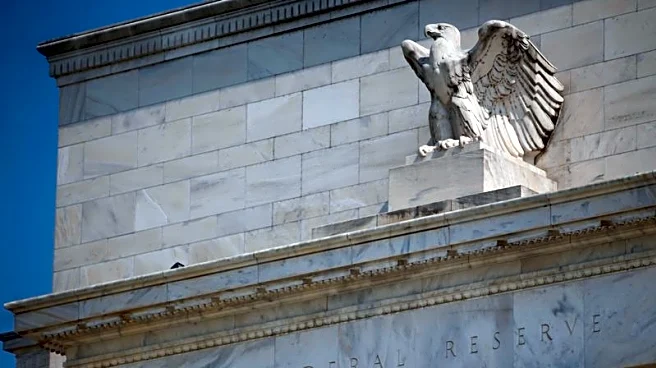What's Happening?
A significant trade in the U.S. rates market suggests anticipation of the Federal Reserve ending its quantitative tightening (QT) program. A block trade of 40,000 contracts, equivalent to holding $2-$3
billion in 10-year Treasuries, indicates expectations that the Secured Overnight Financing Rate (SOFR) will average less than nine basis points above the federal funds rate in November. This move reflects a shift from the year's trend, with traders betting on the Fed's announcement to conclude QT at its upcoming policy meeting. The trade's rate sensitivity is notable, as it implies a potential decrease in repo rates, which have been elevated due to QT and other factors like increased Treasury bill issuance.
Why It's Important?
The potential end of QT by the Federal Reserve could significantly impact liquidity in the financial system. By halting QT, the Fed would stop reducing its balance sheet, which could lead to lower repo rates and increased liquidity. This change is crucial for financial markets as it affects borrowing costs and the availability of funds for banks and money market funds. The decision could also influence investor strategies, particularly in the bond market, where expectations of lower rates might drive demand for longer-dated securities. The broader economic implications include potential shifts in monetary policy and its effects on inflation and economic growth.
What's Next?
The Federal Reserve's policy meeting this week is expected to provide clarity on the future of QT. Market participants will closely watch for any announcements regarding the end of QT and potential new policies to stabilize funding markets. The Fed's decision will likely influence short-term interest rates and could lead to adjustments in investor portfolios, particularly in fixed income markets. Additionally, the Fed's communication will be scrutinized for indications of future monetary policy directions, including interest rate adjustments.












